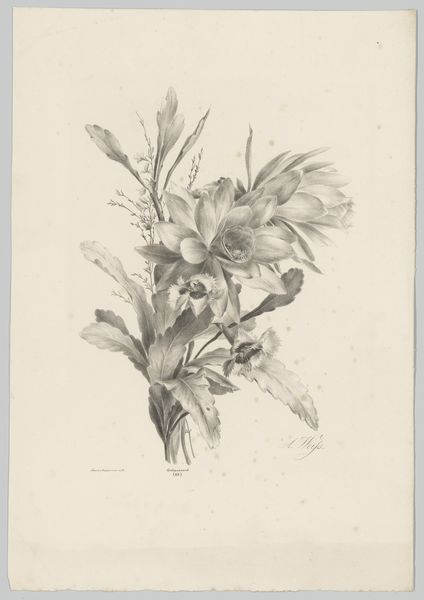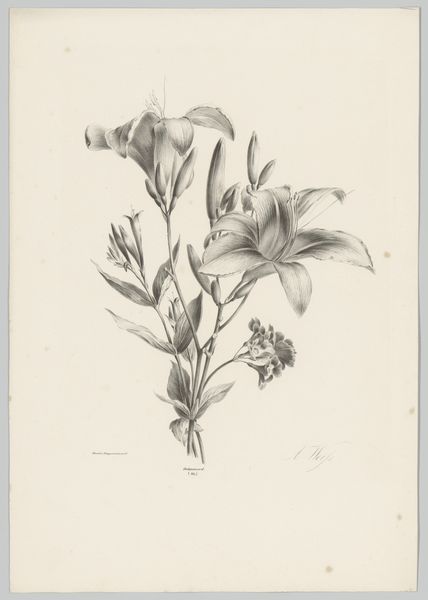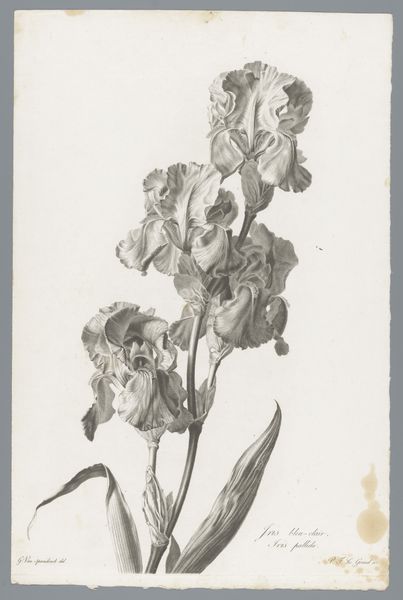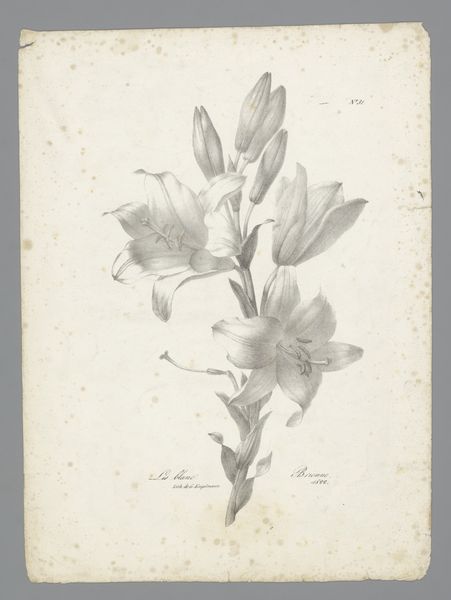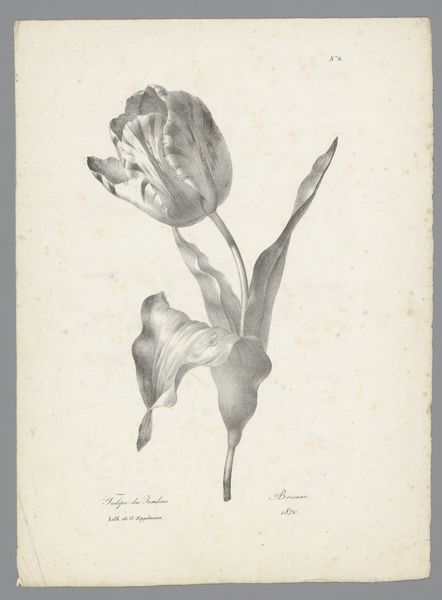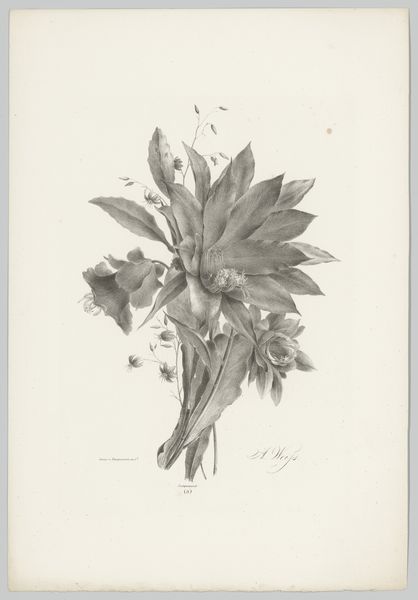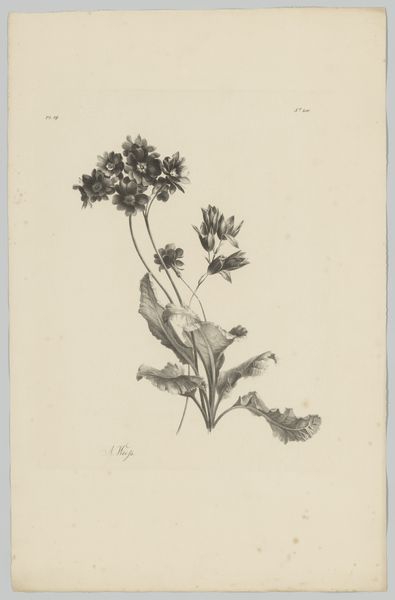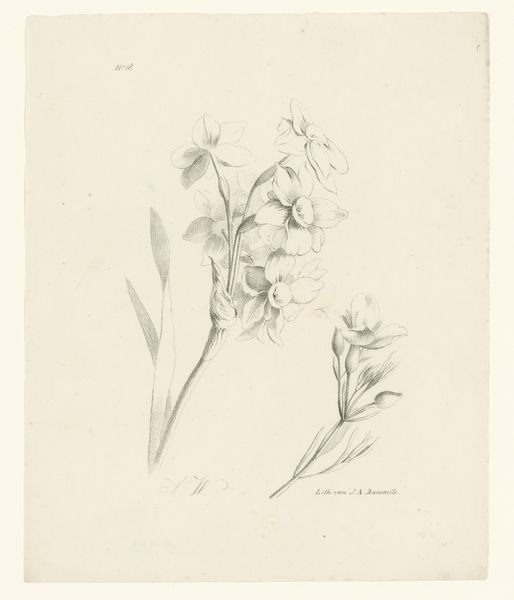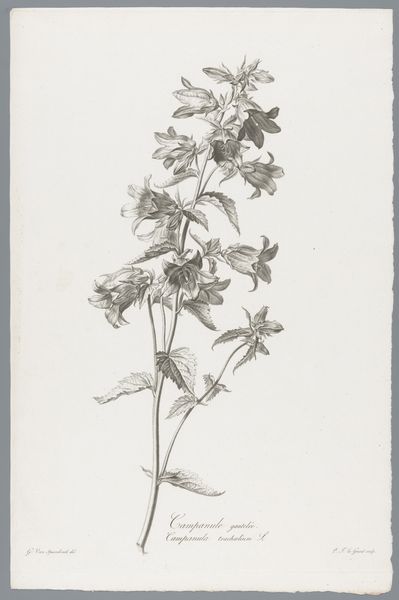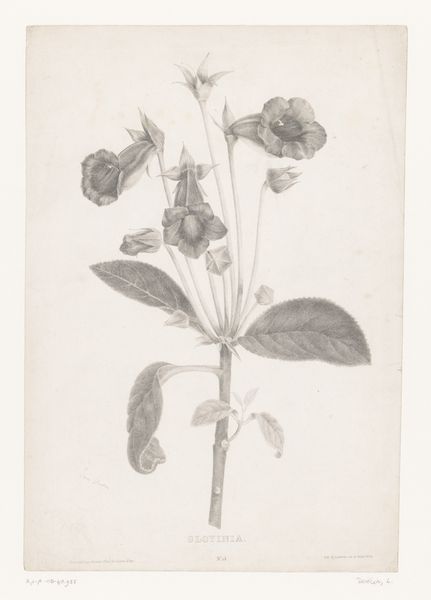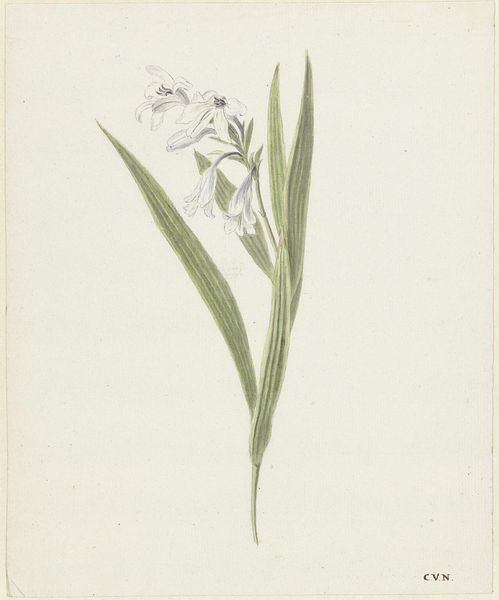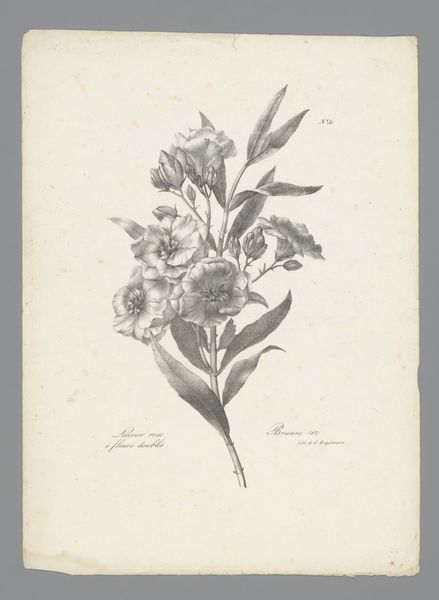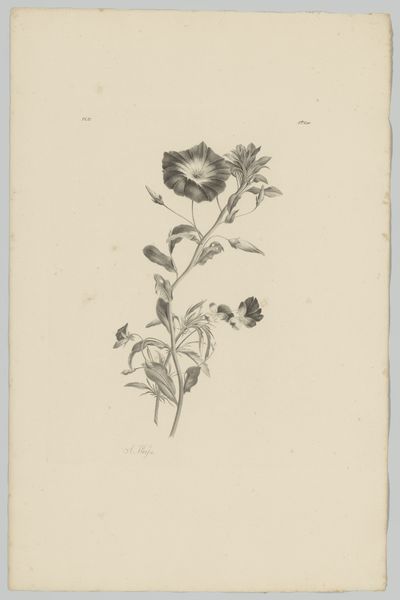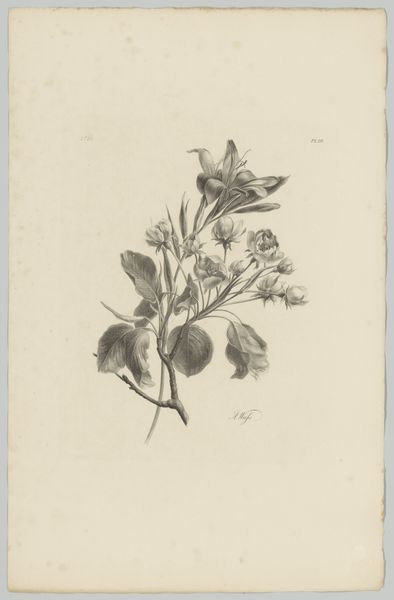
drawing, print, paper, ink, chalk, graphite
#
drawing
# print
#
pencil sketch
#
paper
#
ink
#
chalk
#
france
#
graphite
#
botanical art
#
monochrome
Dimensions: 338 × 218 mm
Copyright: Public Domain
Curator: Look at this subtle and captivating drawing of a tulip. Attributed to Antoine Pierre Mongin, it showcases the delicate form of the flower using graphite, ink, and chalk on paper. It’s currently held in the Art Institute of Chicago. Editor: It’s striking, even stark, rendered in monochrome. There’s a kind of vulnerability to it—the way the tulip's head droops slightly and how the edges of the paper are torn suggests something ephemeral. Curator: Indeed. The use of monochrome emphasizes the line and form. It brings forward the language of botanical illustration, which is also about understanding the divine in nature and its creation. You'll see there’s close attention paid to the textures of the petals, which suggest decay as much as beauty. Editor: Absolutely. Tulips in the Dutch Golden Age, for example, were a symbol of wealth and status—think of "tulip mania." What statement might be made by focusing on its decline rather than its idealized form? Does it signal the eventual collapse of such artificial constructs? Curator: A provocative idea. Flowers also link with ideas of ephemerality and mortality; therefore, Mongin may have selected this species of tulip to indicate the vanitas themes popular in 18th-century France. But its impact feels distinct here, doesn't it? Editor: I agree. There’s also something intrinsically political about the act of drawing flowers, especially historically. Who has the leisure to admire the minutiae of the natural world and transcribe its form with graphite and ink? Where is this flower located, who does the final art piece speak to? Curator: You remind us that this "simple" botanical drawing contains a wealth of coded language, an index to deeper societal and personal awarenesses. It moves from an exploration of visual artistry to being a tool of questioning what that piece of nature may say. Editor: That’s right. Seeing this beautiful flower drawing through different lenses reminds us to continually re-evaluate the power and politics imbued within even the quietest image.
Comments
No comments
Be the first to comment and join the conversation on the ultimate creative platform.
